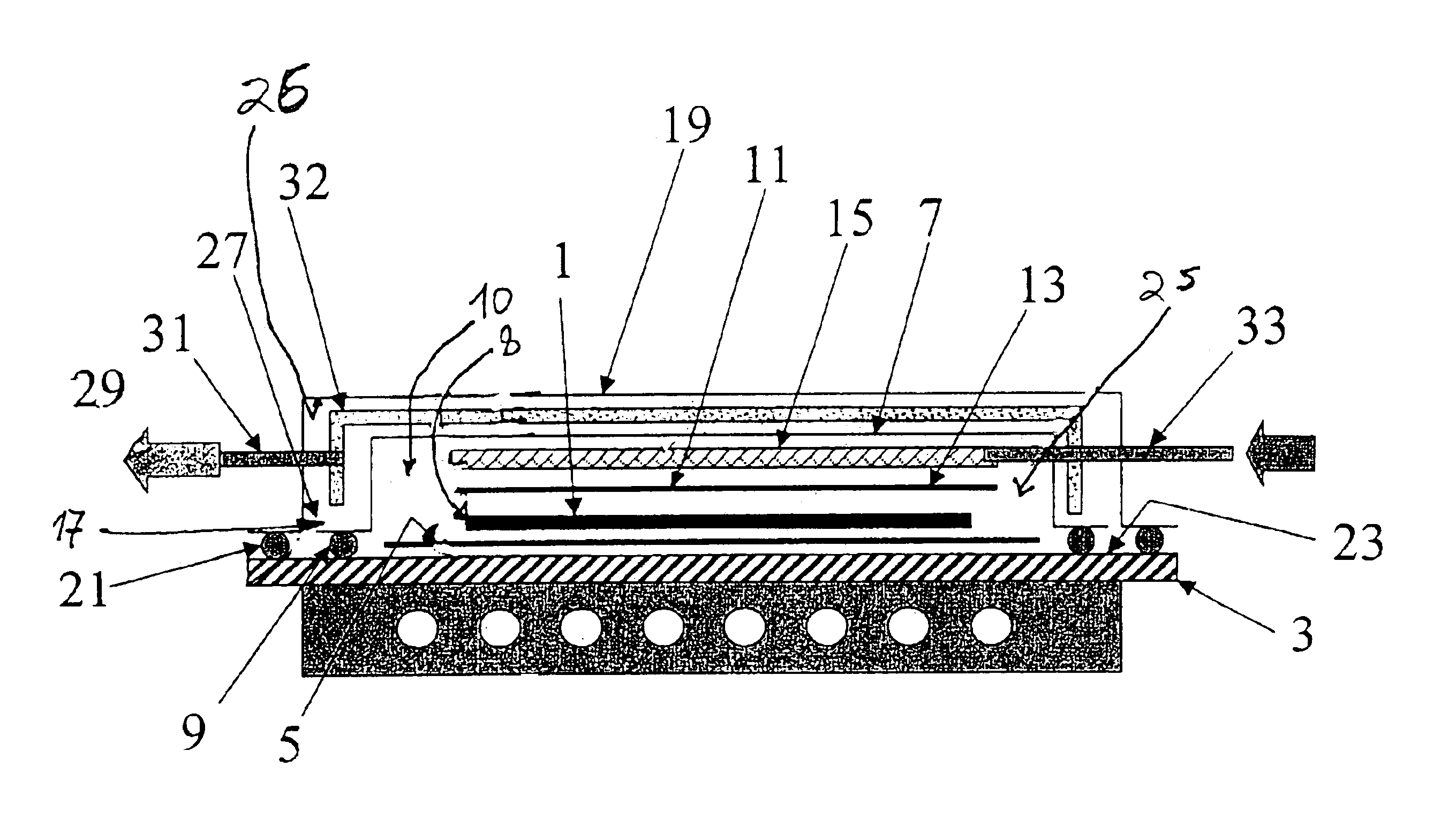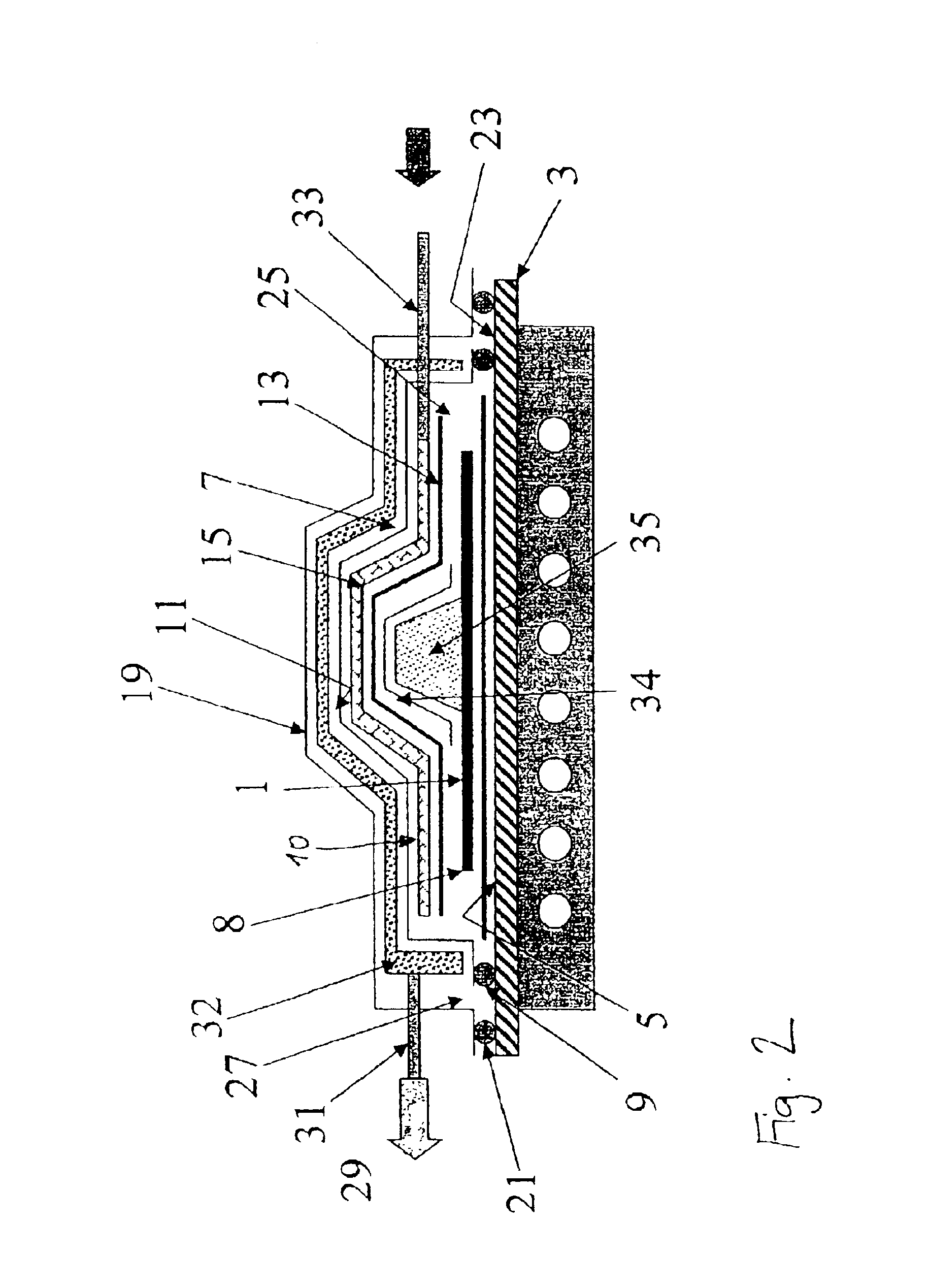Method and device for producing fiber-reinforced components using an injection method
- Summary
- Abstract
- Description
- Claims
- Application Information
AI Technical Summary
Benefits of technology
Problems solved by technology
Method used
Image
Examples
Embodiment Construction
In the device illustrated in FIG. 1, the component or dry fiber composite preform 1 to be produced is arranged on a tool 3, for example, by a mounting 5. The component or laminate may be a reinforced plastic component including carbon fibers, glass fibers, aramide fibers, boron fibers or hybrid materials, the geometric shape of which may be unwindable, non-unwindable or not completely unwindable. The component or laminate is in particular suitable for the production of non-stiffened or stiffened, large-area planking fields, plastics tools or tapered overlap repairs of damaged fiber composite components. Stiffening may be achieved by so-called integral stiffening (profiles made of carbon fiber reinforced plastics, etc., profiles including a combination of sandwich and carbon fiber reinforced plastics, etc.) or stiffening may be achieved by a typical sheet-like sandwich structure. The shape of tool 2 is suitable for accommodating the component 1 or, if necessary, the mounting 5. The t...
PUM
| Property | Measurement | Unit |
|---|---|---|
| Permeability | aaaaa | aaaaa |
| Distribution | aaaaa | aaaaa |
Abstract
Description
Claims
Application Information
 Login to View More
Login to View More - R&D
- Intellectual Property
- Life Sciences
- Materials
- Tech Scout
- Unparalleled Data Quality
- Higher Quality Content
- 60% Fewer Hallucinations
Browse by: Latest US Patents, China's latest patents, Technical Efficacy Thesaurus, Application Domain, Technology Topic, Popular Technical Reports.
© 2025 PatSnap. All rights reserved.Legal|Privacy policy|Modern Slavery Act Transparency Statement|Sitemap|About US| Contact US: help@patsnap.com



